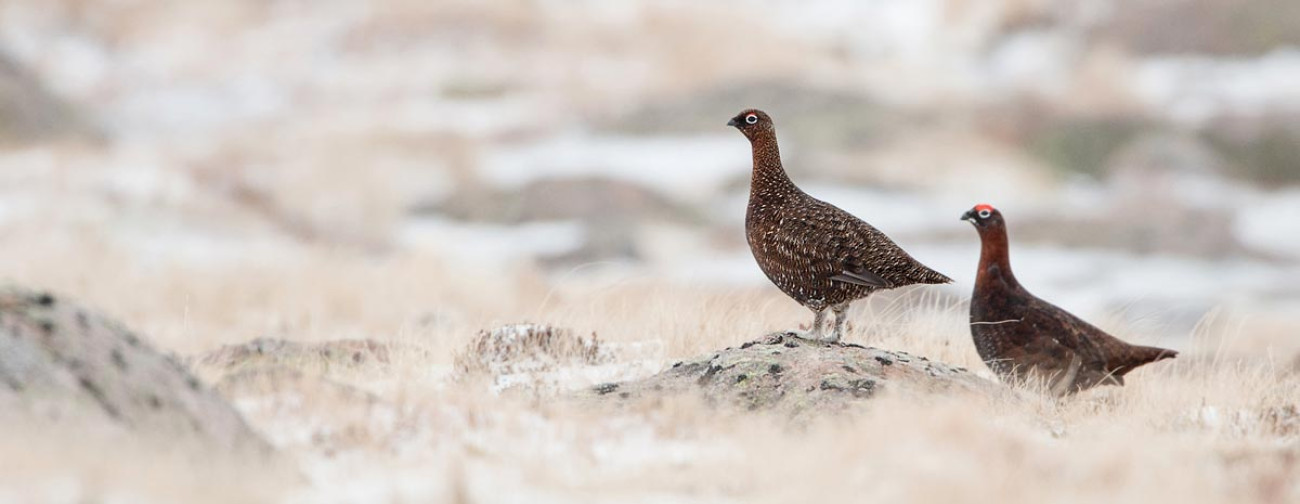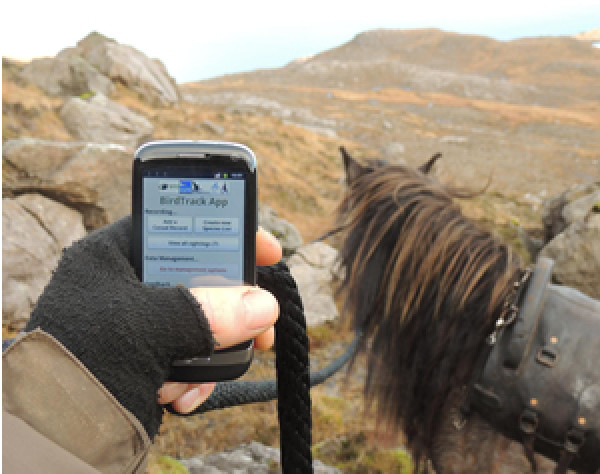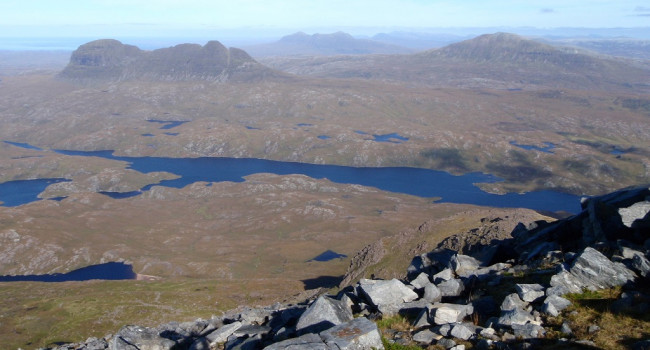Engaging and developing volunteers in Scotland

Scotland has a relatively small and clustered human population and challenging physical geography. Finding volunteers to cover bird survey sites can be difficult, particularly in more remote areas. To ensure that we have enough volunteers, now and in the future, we need to carefully steward our valued supporters, and to continually engage with new people and support their development. Our annual programme of engagement includes conferences, talks, training courses and other events. Stay up to date with forthcoming events and receive updates on our work by signing up to the BTO Scotland e-newsletter.
We are supported in our engagement work by a valued partnership with our friends at the Scottish Ornithologists' Club.
Locally, survey organisation and some aspects of engagement are delivered by our Regional Network volunteers.
The difference that volunteering makes
Volunteers are vital for collecting biodiversity information in Scotland. They generously give their own time to a broad range of recording activities that produce scientifically robust information on: bird populations, distributions, trends and conservation alerts; demography (productivity and survival); phenology (timing of breeding and movements); and migration (movement routes and patterns). The funding that underpins voluntary monitoring activities therefore represents phenomenal value for money.
The information collected by volunteers directly and indirectly contributes to the management and conservation of bird populations in Scotland in a number of ways:
- Species trends, published annually in the Breeding Bird Survey and Wetland Bird Survey annual reports, highlight both short- and long-term population changes. Declines may trigger conservation management if effective interventions are known or may prompt species-specific research to better-understand the drivers of change and to test interventions. BTO’s research into declining breeding waders is one such example.
- Birds can respond quickly to variation in habitat quality and other environmental variables and are used as indicators of environmental change. Nature Scot, the Scottish Government’s statutory nature conservation body, commissions BTO to produce Terrestrial Breeding Birds and Wintering Waterbirds indicators. These are used to evaluate the effectiveness of national conservation policy and Scotland’s progress towards international targets for halting biodiversity loss.
- Site-level distribution and abundance data, such as those collected during the 2007-11 Bird Atlas, and via BirdTrack, are used to assess the effectiveness of local conservation management, and in the Protected Area Network both to underpin initial designation and for site condition monitoring. These data are also regularly used during Environmental Impact Assessments.
- Estimates of population size, along with trend data, are used to underpin conservation management policy decisions, including those relating to human-wildlife conflict.
- Integrated Population Monitoring uses data collected by ringers and nest recorders in combination with information from other monitoring schemes. This allows us to determine which stages of the lifecycle are driving population change (productivity, juvenile survival or adult survival, for example). Once this is known, research to test conservation interventions can be more effectively targeted.
- Our data are frequently used by our own scientists, and partner organisations, in a range of bespoke scientific research projects

Innovative approaches
BTO Scotland was founded in the year 2000, and from the outset we have been using innovative approaches to reach and develop new volunteers. Projects have included:
BBS Upland Rovers
The BBS Upland Rovers initiative came about as a result of work which explored the historical patterns of BBS coverage in Scotland. This showed that more remote squares tended to be visited less frequently, potentially impacting the representativeness of trends, and limiting our ability to collect valuable information about upland species of conservation concern. The Upland Rovers scheme allows volunteers to undertake single one-off visits to a careful selection of rarely-visited remote upland squares. Volunteers can therefore enjoy days out in the hills exploring new areas while contributing important information.
The ‘What’s Up?’ project
This Nature Scot funded project ran from 2012 to 2015 and was success in increasing both structured and unstructured biological recording in upland habitats. During the project we engaged with a range of audiences, including a significant focus on hillwalkers. We delivered a programme of training in both the lowland and high uplands to encourage participation in structured recording such as the Breeding Bird Survey and Volunteer Mountain Transects. In support of this, we offered mentoring to less experienced observers. We also delivered promotional campaign to encourage more casual recording of upland species using BirdTrack, including by distributing thousands of postcards and fold-out ID guides.
Building Bird Monitoring in Scotland (BBMS)
Running between 2007 and 2012, the BTO/SOC Building Bird Monitoring in Scotland project offered skills development training, ranging from basic bird identification for complete beginners through to courses which aimed to build confidence and to encourage more experienced birdwatchers to undertake systematic surveys. Over three years, hundreds of people attended training events across Scotland, including audiences new to bird recording (e.g. hillwalkers, land owners and land managers). The project closely evaluated the success of training events and sought feedback on the needs and aspirations of volunteers.
Project Ptarmigan
In 2006, Project Ptarmigan asked hillwalkers if they would record Ptarmigan (Lagopus mutus) and other montane birds across Scotland. Over 140 volunteers covered 614 transect routes across an impressive 3,212km of Scotland’s arctic alpine zone. Not only did they prove they had the knowledge to identify and record a range of upland birds, they also provided a test of suitably rigorous scientific survey methods that were attractive to hillwalkers rather than traditional birdwatchers. Their experiences contributed to plans for improving monitoring coverage of Scotland’s uplands.






Share this page